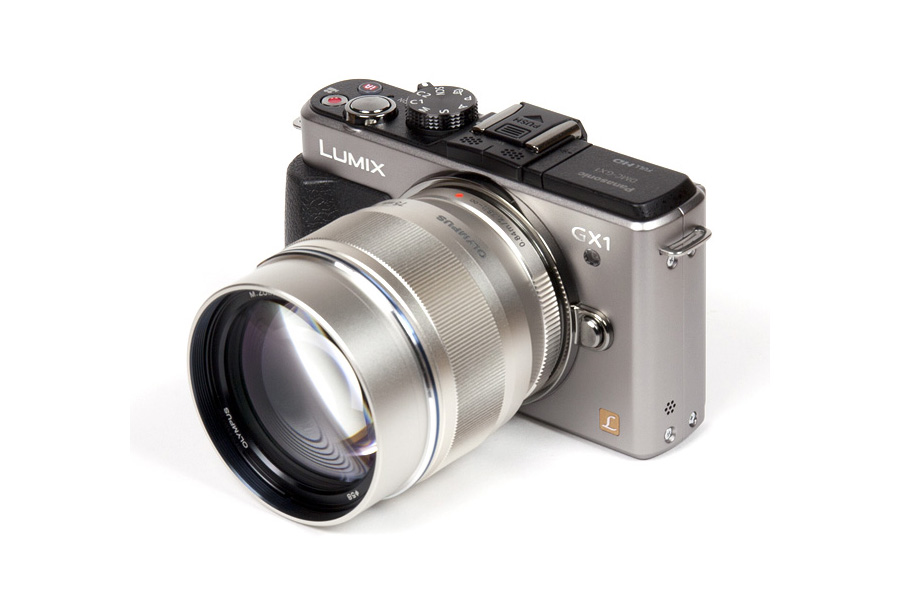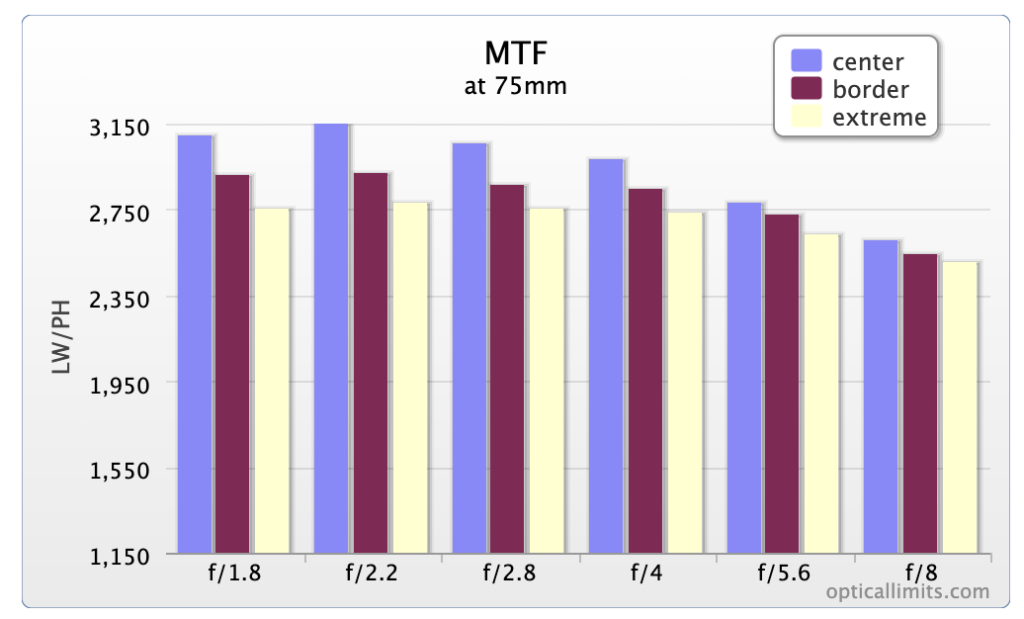
The micro-four-thirds (MFT) system may be the most complete of the mirrorless systems. However, it mostly tackles entry to medium level users but slowly but steadily we are seeing more ambitious offerings. The Olympus M.Zuiko 75mm f/1.8 ED is certainly among them. It has a fairly “unusual” focal length equivalent to a 150mm lens on classic full format cameras. As such it is a moderately long tele lens suitable for applications such as portrait and still-life photography. At f/1.8 it is very fast by MFT standards but keep in mind that in terms of depth-of-field is behaves like a “150mm f/3.6” (full format). While this may not be highly impressive it is usually “good enough” for many if not most scenarios in this focal length class.
The build quality of the Zuiko is highly impressive thanks to an all-metal body and a smoothly operating focus ring – to date this is probably the best MFT lens in this respect that found its way into the (photo-)zone. It is far from being a budget item so it is somewhat surprising that the (barrel-shaped) lens hood is just an optional
and rather pricey accessory. The lens is also not weather-sealed which is the only downside we can spot here.

The 75mm f/1.8 features a MSC (“Movie and Stills Compatible”) AF drive offering a silent, fast and smooth AF. Typical for mirrorless systems the AF accuracy is very high (although this is more a camera rather than a lens aspect). Just like on the other MFT lenses, manual focusing is “by-wire” so you actually drive the AF motor when turning the broad focus ring. However, the mechanism is particularly well implemented and pretty comparable to conventional mechanisms.
| Specifications | |
|---|---|
| Equiv. focal length | 150 mm (full format equivalent) |
| Equiv. aperture | f/3.6 (full format equivalent, in terms of depth-of-field) |
| Optical construction | 10 elements / 9 groups inc. 3xED & 2xHR elements |
| Number of aperture blades | 9 (circular) |
| min. focus distance | 0.84 m (max. magnification 1:10) |
| Dimensions (L x W) | 64 x 69 mm |
| Weight | 305 g |
| Filter size | 58 mm (non-rotating) |
| Hood | No |
| Other features | ZERO coating |
Distortion
Tele prime lenses tend to have marginal image distortion and this is also true for the Olympus lens – it produces just a slight pincushion distortion of ~0.44%. This is also the original distortion as present in RAW files rather than an auto-corrected result.

Vignetting
Light falloff is typically auto-corrected on micro-four-thirds cameras. Consequently this is little to worry about at only 0.5EV fully open and it’s negligible beyond. However, the RAW vignetting is quite a bit more noticeable at ~1.1EV at f/1.8. When stopping down just a tiny bit, the light falloff is not relevant anymore.

MTF (resolution)
The resolution characteristic of the M.Zuiko is outstanding straight from max. aperture down to f/4 and that’s across the image frame. Diffraction has a limiting effect from f/5.6 onward but the quality is still very good at f/8. Overall these are best result that we have seen to date on a MFT camera.
Please note that the MTF results are not directly comparable across the different systems!
Below is a simplified summary of the formal findings. The chart shows line widths per picture height (LW/PH) which can be taken as a measure of sharpness. If you want to know more about the MTF50 figures you may check out the corresponding Imatest Explanations.

Chromatic Aberrations (CAs)
We have seen some extraordinary results in the resolution chapter and the goodness continues with marginal CAs (color shadows at hard contrast transitions at the image borders).

Bokeh
The quality of the bokeh (out-of-focus blur) is naturally a major aspect for such a lens and the Olympus doesn’t disappoint us here. The transitions are very smooth and buttery and that’s both in the foreground and background, which is a rare characteristic.

Out-of-focus highlights are perfectly circular and evenly rendered from f/1.8 to f/2.8. However, at f/1.8 this applies only to the image center – in the border region you can see a slight deterioration towards a ellipsoid shape caused by vignetting. Starting at f/4 you can spot the individual aperture blades (just). However, this is comparatively ‘late’ thanks to the 9 aperture blades.

Bokeh Fringing / Longitudinal Chromatic Aberrations (LoCA)
Bokeh fringing is a common issue with fast glass. It’s visible as halos of different colors in out-of-focus areas – magenta (red + blue) in front of the focus point and green beyond.
The M.Zuiko 75mm f/1.8 shows noticeable bokeh fringing from f/1.8 to f/2.8 and still minor traces at f/4.

Sample Images
The Olympus M.Zuiko 75mm f/1.8 ED is, by quite a margin, the best micro-four-thirds lens that we have tested to date. It is ultra-sharp straight from f/1.8 and in fact, it is basically diffraction-limited so stopping down doesn't really improve the image quality anymore. The amount of lateral CAs is also very low which contributes to the high sharpness perception. There's a bit of vignetting at fully open aperture (more so in RAW mode) but usually this is nothing to worry about. Distortions are next to absent as well. The quality of the bokeh is also among the very best that we've seen so far - regardless of the system. That said you can spot some bokeh fringing at large aperture so there is still a slight space for improvement to optical perfection.
Mechanically the lens is up to pro standards thanks to a tightly assembled metal body and a smooth focus ring. If you are nit-picky you may criticize the lack of weather sealing though. The AF is impressively fast and silent. Olympus claims that the AF is smooth enough for movies as well but more serious users will probably prefer to stick to manual focusing - which works quite nicely as well actually.
Highly recommended … of course - despite the high price tag.
-
Optical Quality
-
Build Quality
-
Price / Performance

